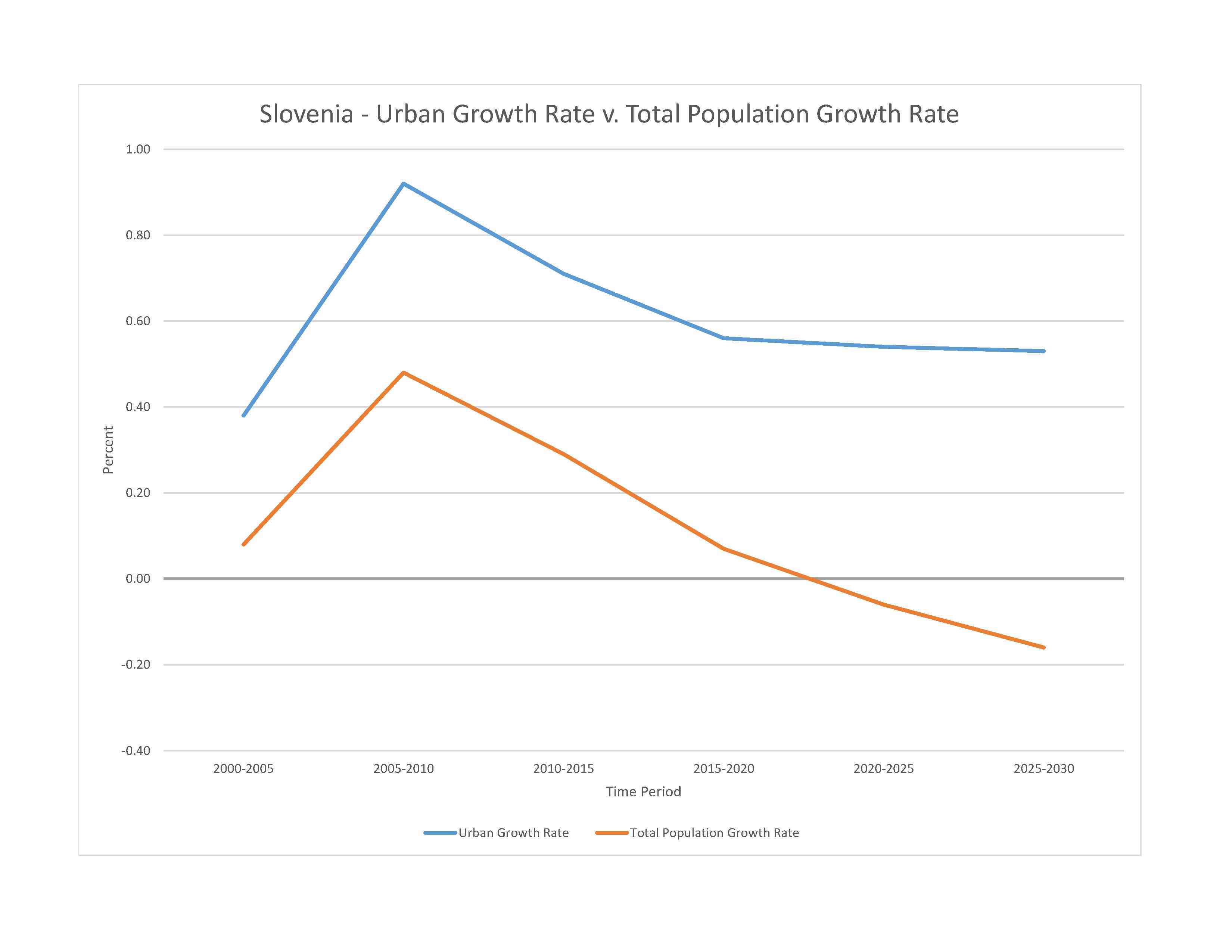
2,099,790 (2023 est.)
noun: Slovene(s)
adjective: Slovenian
Slovene 83.1%, Serb 2%, Croat 1.8%, Bosniak 1.1%, other or unspecified 12% (2002 est.)
Slovene (official) 87.7%, Croatian 2.8%, Serbo-Croatian 1.8%, Bosnian 1.6%, Serbian 1.6%, Hungarian 0.4% (official, only in municipalities where Hungarian national communities reside), Italian 0.2% (official, only in municipalities where Italian national communities reside), other or unspecified 3.9% (2002 est.)
major-language sample(s):
Svetovni informativni zvezek - neobhoden vir osnovnih informacij. (Slovene)
The World Factbook, the indispensable source for basic information.
Catholic 69%, Orthodox 4%, Muslim 3%, Christian 1%, other 3%, atheist 14%, non-believer/agnostic 4%, refused to answer 2% (2019 est.)
0-14 years: 14.55% (male 156,499/female 148,987)
15-64 years: 62.73% (male 685,750/female 631,553)
65 years and over: 22.72% (2023 est.) (male 208,832/female 268,169)
total dependency ratio: 55.5
youth dependency ratio: 23.6
elderly dependency ratio: 31.9
potential support ratio: 3.1 (2021 est.)
total: 45.9 years (2023 est.)
male: 44.6 years
female: 47.5 years
-0.08% (2023 est.)
8.1 births/1,000 population (2023 est.)
10.5 deaths/1,000 population (2023 est.)
1.5 migrant(s)/1,000 population (2023 est.)
a fairly even distribution throughout most of the country, with urban areas attracting larger and denser populations; pockets in the mountainous northwest exhibit less density than elsewhere
urban population: 56.1% of total population (2023)
rate of urbanization: 0.54% annual rate of change (2020-25 est.)

286,000 LJUBLJANA (capital) (2018)
at birth: 1.04 male(s)/female
0-14 years: 1.05 male(s)/female
15-64 years: 1.09 male(s)/female
65 years and over: 0.78 male(s)/female
total population: 1 male(s)/female (2023 est.)
29 years (2020 est.)
5 deaths/100,000 live births (2020 est.)
total: 1.5 deaths/1,000 live births (2023 est.)
male: 1.6 deaths/1,000 live births
female: 1.4 deaths/1,000 live births
total population: 82 years (2023 est.)
male: 79.2 years
female: 85 years
1.6 children born/woman (2023 est.)
0.78 (2023 est.)
N/A
improved: urban: N/A
total: 99.5% of population
unimproved: urban: N/A
rural: N/A
total: 0.5% of population (2020 est.)
9.5% of GDP (2020)
3.28 physicians/1,000 population (2019)
4.4 beds/1,000 population (2018)
improved: urban: N/A
rural: N/A
total: 99% of population
unimproved: urban: N/A
rural: N/A
total: 1% of population (2020 est.)
20.2% (2016)
total: 11.05 liters of pure alcohol (2019 est.)
beer: 4.54 liters of pure alcohol (2019 est.)
wine: 5.26 liters of pure alcohol (2019 est.)
spirits: 1.26 liters of pure alcohol (2019 est.)
other alcohols: 0 liters of pure alcohol (2019 est.)
total: 22% (2020 est.)
male: 24.4% (2020 est.)
female: 19.6% (2020 est.)
N/A
46.4% (2023 est.)
5.8% of GDP (2020 est.)
definition: NA
total population: 99.7%
male: 99.7%
female: 99.7% (2015)
total: 18 years
male: 17 years
female: 18 years (2020)
NOTE: The information regarding Slovenia on this page is re-published from the 2024 World Fact Book of the United States Central Intelligence Agency and other sources. No claims are made regarding the accuracy of Slovenia 2024 information contained here. All suggestions for corrections of any errors about Slovenia 2024 should be addressed to the CIA or the source cited on each page.
This page was last modified 04 May 24, Copyright © 2024 ITA all rights reserved.